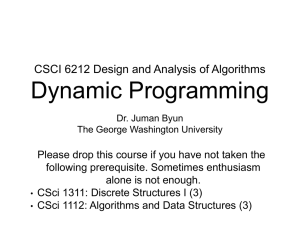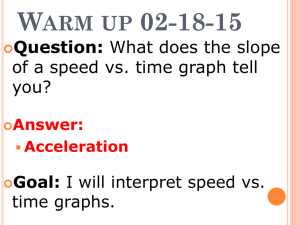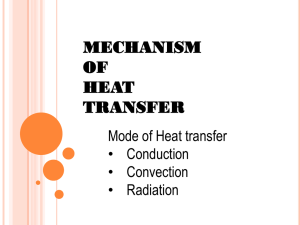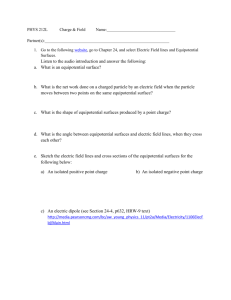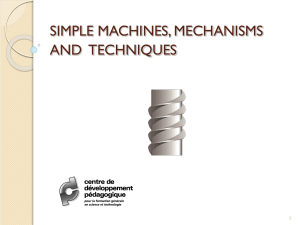Materials Selection Without Shape
advertisement
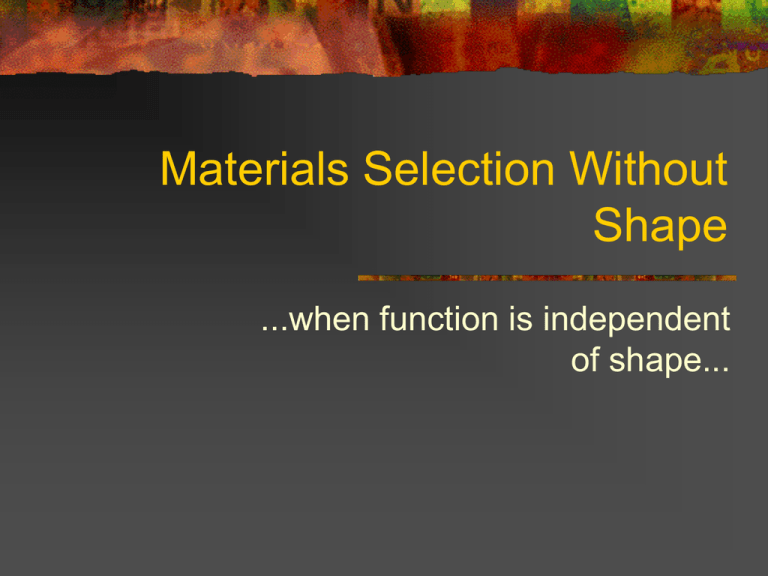
Materials Selection Without Shape ...when function is independent of shape... Selection Procedure Performance Indices Component performance described by the objective function p = f[(Functional requirement, F), (Geometric parameters, G), (Materials properties, M)] p may mean mass, volume, cost or life, etc. If F, G and M are not inter-related, i.e. p = f1(F)f2(G)·f3(M), then the choice of material is independent of geometric details of the design. p can then be optimized by optimizing f3, called performance index. Example to illustrate the Procedure - A Tie Rod Mass of rod, m = Al P f Tie rod must be able to carry a stress A Sf P P m S f P l f F G M Sf: safety factor The lightest tie rod without failing under P is that with largest performance index, M = f / For a light stiff tie rod, M = E/ Example - A Light Stiff Column P A=r2 Buckling load 2 2 4 Pcrit n EI n E r P P 2 2 1 Sf Sfl S f l 4 4 2 1 l 2 Mass of column, m Al 2S f P 1 2 n E For buckling, M = E1/2/ Note the changes in M due to changes in loading direction while the geometry remains unchanged Common Features of the Steps for the 2 Examples The length, l, of the rod is specified The mass, m, of the rod is to be minimized Write the objective function, i.e. the equation for m. The constraints are either no yielding or no buckling under the prescribed load, P The free variables (geometric parameters in these cases) are eliminated Procedure for Deriving a Performance Index Identify the attribute to be maximized or minimized Develop equation for this attribute in terms of the functional requirements, the geometry and the material properties (the objective function) Identify the free (unspecified) variables Identify the constraints; rank them in order of importance Develop equations for the constraints (no yield; no fracture; no buckling, maximum heat capacity, cost below target, etc.) Procedure for Deriving a Performance Index (cont.) Substitute for the free variables from the constraints into the objective function Group the variables into three groups: functional requirements, F, G and M, thus: ATTRIBUTE f(F,G,M) Read off the performance index, expressed as a quantity M, to be maximized Note that a full solution is not necessary in order to identify the material property group Some Commonly Used Performance Indices Procedure for Selecting Materials (Primary Constraints) Some non-negotiable constraints exists, e.g. operating temperature, conductivity, etc. Either P > Pcirt or P < Pcrit These constraints appear as horizontal or vertical lines on materials selection chart Those satisfying the constraints are in the viable search region Procedure for Selecting Materials (Primary Constraints) Procedure - Performance Maximizing Criteria To seek in the search region the materials which maximize the performance e.g. Performance Index for tie is E/ (= C) log E = log + log C represents a set of straight lines, known as design guidelines on MS chart for various C. All materials lying on the same guideline perform equally well; those above are better and those below are worse. Procedure - Performance Maximizing Criteria Multiple Constraints Most materials selection problems are overconstrained, i.e. more constraints than free variables. For aircraft wing spar, weight must be minimized, but with constraints on stiffness, strength, toughness, etc. Performance maximization can be done in steps by considering the most important constraint first and apply the second constraint to the subset, and so on. Multiple Constraints The materials in the search region become the candidates for the next stage of the selection process Judgement is needed for prioritizing the constraints and the size of the subset in each stage. Reduce the Need for Judgement for Multiple Constraints Problems E.g. one free variable, two constraints p f1 F f 2 G f 3 M f 3 M g1 F g 2 G g 3 M f1 F f 2 G p g1 F g 2 G g 3 M The ratio of the two performance indices is therefore fixed by the functional and geometric requirements Example for Multiple Constraints A tie loaded in tension minimum weight without failing or elastic deformation less than u m S F l f m S f F l 2 u E f E / l f u (specified!) Multiple Design Goals There are always more than one quantity to be optimized, e.g. weight, cost, safety, etc. One possible way is to assign weighting factors to each goal, e.g. weight (10) and cost (6), etc. A more objective way is to convert all goals into the same ‘currency’, e.g. small weight can reduce transportation cost, and means less fuel cost, etc. Summary Fully constrained problem identify performance index to be maximized or minimized Over constrained problem optimize in stages or, preferably, derive the coupling equation for the performance indices Multiple goals problem convert the design goals into common ‘currency’


